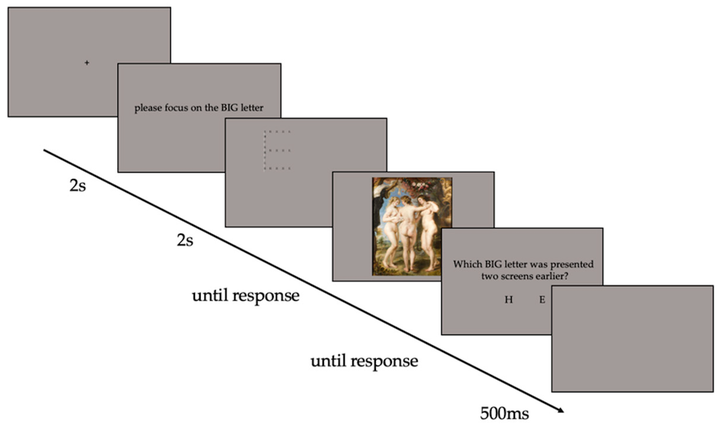 Image credit: Vision
Image credit: VisionAbstract
The visual inspection of scenes is disrupted when participants are forced to begin inspection away from the centre of an image. The present study explored the effect of the starting point on the visual inspection of paintings. Eye movements were recorded while participants viewed paintings for later identification in a yes/no discrimination task. The viewing of each painting was preceded by the presentation of a pseudo-randomly positioned Navon figure. Participants were instructed using a cue to attend to either the local or global level of the Navon figure. Each painting was split into regions of interest (ROIs) defined by face, theme, and context to allow the analysis of eye movements. These data were directly compared with a subset of those initially reported in our previous study in which the same experiment was run but without the inclusion of the Navon figure. The inclusion of the Navon task lowered the discrimination accuracy in the yes/no discrimination task. More importantly, eye movements to the paintings were disrupted across the entire period over which they were viewed and not just in the period following the offset of the Navon figure. The results show the sensitivity of eye movements to the conditions present at the beginning of viewing. The results have implications for the viewing of paintings (and other images) in the real world, where the starting conditions for inspection cannot be controlled. (OA article distributed under the Creative Commons Attribution License)